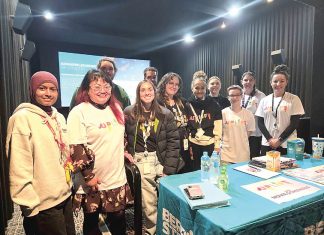The manager in charge of the safety and security of the Hazelwood mine failed to phone triple zero when the mine caught fire, an inquiry has heard.
Contrary to GDF Suez protocol that triple zero must be called in the event of a fire, Hazelwood mine security and emergency services manager Alan Roach decided instead to alert the regional controller.
Mr Roach followed this shortly with a call to the incident control centre and at no point expressed the blaze was beyond the firefighting capacity of the mine’s resources, the Hazelwood Mine Fire Inquiry heard on Thursday.
He said, to his knowledge, no other mine employees phoned triple zero.
On Friday, Fire Services Commissioner Craig Lapsley told the Inquiry GDF Suez security contractor Diamond Protection Services phoned triple zero at 1.40pm, 47 minutes before the fire was seen by Mr Roach from a lookout.
It was not made clear what this call entailed. Outlining his movements during 8 and 9 of February, Mr Roach said he was shown on 8 February a “worst case scenario” map – known as a ‘Phoenix Model’ – of potential fires in the mine forecasted for 2am on Monday, 10 February.
“The only thing I could draw from it was worst case scenario: with no firefighting and no fire protection at 2am on Monday morning the Hernes Oak fire could reach our northern batters,” Mr Roach said.
Mr Roach conveyed he did not fully understand the Phoenix Model and had consulted his counterpart at AGL Loy Yang, Nick Demetrios.
Counsel assisting the board of inquiry Melissa Richards questioned on Thursday whether Mr Demetrios was a fire analyst and why higher authorities were not contacted in relation to understanding the map. On the morning of Sunday, 9 February, Mr Roach believed the mine was appropriately prepared for potential fires, the inquiry heard.
“We had our fire mitigation plans, which had been issued by – it was either (Robert Dugan) or (David Shanahan) – on the Friday, and I was comfortable that those plans… in place were going to address any threats or risks that we’d had over the weekend,” Mr Roach said.
With a status of “contained” Mr Roach said he was not worried about the Hernes Oak fire spreading, despite the worst weather conditions since Black Saturday.
At 2.28pm on Sunday, 9 February, Mr Roach said he saw fire in the north-eastern batters.
“We had a fire located in the Driffield area, strong south-westerly wind that was blowing the fire across the open cut and embers were falling into the open cut,” Mr Roach said. Two minutes later, Mr Roach phoned a regional control centre contact as he was unaware the incident control centre had been managing the Hernes Oak fire and subsequently requested the ICC phone number.
After leaving a message with the ICC, he then spoke with incident controller Peter McKew.
Mr Roach said he discussed the fire on the north-eastern batters with Mr McKew and his concerns of the spread of fire in a south-westerly direction from the Driffield fire.
However, it was not until their third phone conversation that Mr Roach asked for aerial assistance.
Adding to the confusion, Mr Roach then received an email from Mr McKew with aerial photographs of the Yallourn open cut.
According to Mr Lapsley, it was not until 6pm on the evening of 9 February that the state control centre knew of the mine fire in detail.
To view the transcript of the Hazelwood Mine Fire Inquiry public hearing on Thursday, 29 May click here.










